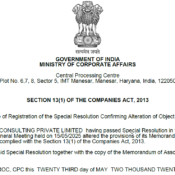How to Calculate Income Tax on Salary with Example
How to Calculate Income Tax on Salary with Example— Income tax can seem daunting, especially with the various components of salary, tax slabs, and deductions involved. Whether you’re a fresh graduate starting your first job or a professional expert, understanding how to calculate income tax on your salary is a crucial aspect of financial planning for every salaried individual.
Income tax is a legal obligation and an opportunity to optimize your earnings by leveraging deductions and exemptions. The calculation will help determine how much tax you owe, which can help you manage your finances better and avoid last-minute surprises. In this blog, Prakasha & Co will break down the process of how to calculate income tax on salary with example in simple stamps that will help you stay compliant and save money.
Table of Contents
ToggleUnderstanding the Basics of Income Tax on Salary
Income tax is a percentage of your earnings that you pay to the government, based on your income level and applicable tax slabs. Gaining knowledge regarding income tax on salary is essential for every working individual as it directly impacts your take-home pay and financial planning. For salaried individuals, tax is calculated on the total income earned during a financial year, after accounting for exemptions, deductions, and allowances. By understanding the basics of income tax calculation, you can ensure compliance with tax laws, avoid penalties, and make informed decisions to minimize your tax liability.
Key Features:
- Income tax is calculated on your total salary after exemptions and deductions.
- Tax slabs vary based on age and income level.
- Exemptions like HRA and deductions under Section 80C can reduce taxable income.
- Accurate tax calculation helps avoid penalties and optimize savings.
- Tax planning is crucial for maximizing take-home pay and financial stability.
Step-by-Step Process to Calculate Income Tax on Salary
Calculating income tax on your salary may seem complex, but by breaking it down into simple steps, you can easily determine your tax liability. The process involves calculating your gross salary, subtracting exemptions and deductions to arrive at your net taxable income, and then applying the applicable tax slabs to compute the final tax amount. By following a structured approach, you can ensure accuracy in your tax calculations and avoid any last-minute hassles during tax filing.
Key Steps:
- Calculate your gross salary by adding all components like basic pay, allowances, and bonuses.
- Subtract exemptions such as HRA, travel allowance, and medical reimbursements.
- Deduct eligible investments and expenses under Sections 80C, 80D, and others.
- Determine your net taxable income by subtracting exemptions and deductions from your gross salary.
- Apply the relevant income tax slabs based on your age and income level.
- Add a surcharge (if applicable) and health and education cess (4% of the total tax).
- Calculate the final income tax payable for the financial year.
Example of How to Calculate Income Tax on Salary
Let’s take an example to understand how income tax on salary is calculated. Assume Mr. Raj, aged 35, earns a monthly salary of ₹1,00,000. Here’s a breakdown of his salary components and how his income tax is computed for the financial year 2023-24 (Assessment Year 2024-25):
Step 1: Calculate Gross Salary
- Basic Salary: ₹50,000 per month × 12 = ₹6,00,000
- House Rent Allowance (HRA): ₹30,000 per month × 12 = ₹3,60,000
- Special Allowances: ₹20,000 per month × 12 = ₹2,40,000
- Gross Salary = ₹6,00,000 + ₹3,60,000 + ₹2,40,000 = ₹12,00,000
Step 2: Subtract Exemptions
- HRA Exemption: Let’s assume Raj pays ₹20,000 per month as rent and lives in a metro city. The HRA exemption will be the least of the following:
- Actual HRA received: ₹3,60,000
- 50% of basic salary (metro city): ₹3,00,000
- Rent paid minus 10% of basic salary: ₹2,40,000 – ₹60,000 = ₹1,80,000
HRA Exemption = ₹1,80,000
- Standard Deduction: ₹50,000 (fixed for all salaried individuals)
- Total Exemptions = ₹1,80,000 + ₹50,000 = ₹2,30,000
Step 3: Subtract Deductions
- Raj invests ₹1,50,000 in tax-saving instruments under Section 80C (e.g., PPF, ELSS, life insurance).
- He also pays ₹25,000 for health insurance under Section 80D.
- Total Deductions = ₹1,50,000 + ₹25,000 = ₹1,75,000
Step 4: Determine Net Taxable Income
Net Taxable Income = Gross Salary – Exemptions – Deductions
= ₹12,00,000 – ₹2,30,000 – ₹1,75,000
= ₹7,95,000
Step 5: Apply Income Tax Slabs
For FY 2023-24, the tax slabs for individuals below 60 years are:
- Up to ₹2,50,000: Nil
- ₹2,50,001 to ₹5,00,000: 5%
- ₹5,00,001 to ₹10,00,000: 20%
- Above ₹10,00,000: 30%
Tax Calculation:
- On first ₹2,50,000: ₹0
- On next ₹2,50,000 (₹5,00,000 – ₹2,50,000): 5% of ₹2,50,000 = ₹12,500
- On remaining ₹2,95,000 (₹7,95,000 – ₹5,00,000): 20% of ₹2,95,000 = ₹59,000
- Total Tax Before Cess = ₹12,500 + ₹59,000 = ₹71,500
Step 6: Add Health and Education Cess
- Health and Education Cess = 4% of ₹71,500 = ₹2,860
- Total Tax Payable = ₹71,500 + ₹2,860 = ₹74,360
Summary
- Gross Salary: ₹12,00,000
- Exemptions: ₹2,30,000
- Deductions: ₹1,75,000
- Net Taxable Income: ₹7,95,000
- Total Tax Payable: ₹74,360
This example demonstrates how income tax on salary is calculated step-by-step, making it easier for readers to understand and apply the process to their salary structure.
Common Mistakes to Avoid While Calculating Income Tax
Calculating income tax accurately is crucial for individuals and businesses to avoid penalties and ensure compliance with tax laws. Common mistakes often arise from misunderstandings of tax regulations, incomplete information, or simple oversight. Some frequent errors include failing to report all sources of income, misclassifying income types, and neglecting to claim eligible deductions. These mistakes can lead to underreporting income, resulting in potential audits or fines. Therefore, being aware of these pitfalls can help taxpayers navigate the complexities of income tax calculations more effectively.
Key Points:
- Ensure you include all forms of income, such as salaries, freelance work, rental income, and investment returns. Omitting any source can lead to underreporting and penalties.
- Different types of income are taxed at different rates. Misclassifying capital gains as ordinary income can result in overpayment of taxes.
- Double-check personal information entered into tax calculators or forms to avoid errors that could affect your tax liability.
- Take advantage of all eligible deductions, such as charitable contributions or business expenses, which can significantly lower taxable income.
- Understand the difference between a confusing assessment year and a financial year to ensure correct filing timelines and compliance with tax regulations.
Final Words
Therefore, these are some important aspects you need to remember while calculating income tax on salary. You can also contact Prakasha & Co for a seamless experience for calculating income tax on salary.
Frequently Asked Questions (FAQs)
What is the gross salary?
Gross salary includes basic salary, allowances, bonuses, and any other taxable components of income.
How do I calculate my taxable income?
Taxable income is calculated by subtracting exemptions and deductions from your gross salary.
What are common exemptions in salary calculation?
Common exemptions include House Rent Allowance (HRA), Leave Travel Allowance (LTA), and the standard deduction.
How is income tax calculated on salary?
Income tax is calculated by applying the applicable tax slabs to your taxable income after deductions.
What are the current income tax slabs for individuals?
The tax slabs vary based on income levels, with different rates for various income income ranges, including zero tax for incomes up to ₹2.5 lakh.
Can I claim deductions for health insurance premiums?
Yes, you can claim deductions for health insurance premiums under Section 80D.
What is the standard deduction amount for salaried individuals?
The standard deduction amount is currently ₹50,000 for salaried individuals.
Is there a rebate available for low-income earners?
Under Section 87A, individuals with taxable incomes up to ₹5 lakh are eligible for a rebate.
How do I calculate my total tax liability?
Total tax liability is calculated by summing up the tax on your taxable income, any applicable surcharges, and health and education cess.
Like Us On Facebook

Our Client's Review
EXCELLENTTrustindex verifies that the original source of the review is Google. Best place to file ur GST n IT returns .. They respond quickly, communicate well and get ur work done as per ur needs in a very short time ..Trustindex verifies that the original source of the review is Google. Best place for Income tax filingTrustindex verifies that the original source of the review is Google. Of all the CA, CS teams I have interacted with, they are the most prompt and organized. I have taken their services for almost 3 years now for various things like income tax queries, income tax filing, networth certificates, and compliance certificates. They always display a clear understanding of the law and are also able to explain it to you in layman terms. Overall a very resourceful and courteous team. Thank you for the support!Trustindex verifies that the original source of the review is Google. Best company secretary I bangalore ever seen such quick quality serviceTrustindex verifies that the original source of the review is Google. Prakasha & Co has been a lifesaver for me when it comes to my tax dispute and filings with IT office. They are always very responsive and helpful whenever I have any questions or issues, I recently had an issue with my sister business GST filings, and they were able to quickly identify the issue and help me resolve it. They really go above and beyond to make sure their clients are taken care of.Trustindex verifies that the original source of the review is Google. ''The team at Prakasha& Co made sure my company was compliant with all the legal requirements. Their attention to detail and timely response was truly remarkable."Trustindex verifies that the original source of the review is Google. "I was impressed with the level of customer service provided by Prakasha& Co. They were always available to answer my questions and provide guidance throughout the company registration process."
Important Links
- Top 10 GST Registration Consultants in Bangalore
- Top 10 Best Income Tax Lawyers in Bangalore
- Top 10 Trademark Registration Consultants in Bangalore
- GST Registration in Bangalore
- Private Limited Company Registration in Bangalore
- Partnership Firm Registration in Bangalore
- Proprietorship Registration in Bangalore
- Trademark Registration in Bangalore
- Audit Frim in Bangalore
- CA Firm in Bangalore
- Accounting Services in Bangalore
- GST Lawyers in Bangalore
- Payroll Services Provider in Bangalore
- Payroll Consultant in Bangalore
- Income Tax Lawyer in Bangalore
All Categories
- Audit
- Blogs
- Bookkeeping Services
- Company Registration
- Company secretary Legal & Chartered Accountant
- Digital Signature Certificate (DSC) Services
- FSSAI Registration and Consultation
- GST
- Income tax
- Partnership Firm Registration
- Payroll Services
- Risk Management Services
- Startup Registration Process
- Trademark Registration
- Uncategorized










